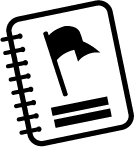Anchoring your observations in some sort of measurement system will help ensure that you coach consistently across staff members and settings. It also will help you provide objective, factual feedback to staff members about their learning environments. This is a brief annotated list of common environmental observation tools. This list is not exhaustive. Check with your administrator for tools that your program recommends.
- Early Childhood Environment Rating Scale-Third Edition (ECERS-3) by Thelma Harms, Richard M. Clifford, and Debby Cryer. This tool is widely used in early care and education programs. It is divided into six subscales: Space and Furnishings, Personal Care Routines, Language and Literacy, Learning Activities, Interactions, and Program Structure. It is appropriate for preschool classrooms. Each subscale is rated on a scale of 1-5.
- Infant/Toddler Environment Rating Scale-Third Edition (ITERS-3) by Thelma Harms, Debby Cryer, Richard M. Clifford, and Noreen Yazejian. This tool is designed for use in settings for infants and toddlers. It is divided into six subscales: Space and Furnishings, Personal Care Routines, Language and Books, Activities, Interaction, and Program Structure.
- Family Child Care Environment Rating Scale-Third Edition (FCCERS-3) by Thelma Harms, Debby Cryer, Richard M. Clifford, and Noreen Yazejian. This tool is designed to assess the quality of home-based or family child-care programs. These programs may serve children from infancy through school-age. It also has six subscales: Space and Furnishings, Personal Care Routines, Language and Books, Activities, Interaction, and Program Structure.
- School-Age Care Environment Rating Scale- Updated Edition (SACERS-U) by Thelma Harms, Ellen Vineberg Jacobs, and Donna Romano White. This tool is designed to assess the quality of programs serving children ages 5-12 in group settings. It has seven subscales: Space and Furnishings, Health and Safety, Activities, Interactions, Program Structure, and Staff Development.
- Early Language and Literacy Classroom Observation Toolkit (ELLCO) by Miriam W. Smith, Joanne P. Brady, and Louisa Anastasopolous. This tool was designed to assess the quality of literacy environments and instruction in preschool and K-3 classrooms. It consists of a classroom observation and a teacher interview. It measures five literacy elements: Classroom Structure, Curriculum, Language Environment, Books and Book Reading Opportunities, and Print and Early Writing Supports.
|


